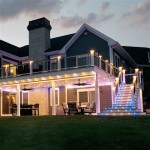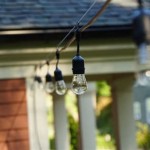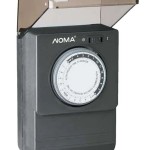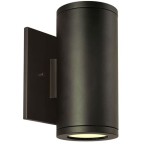Batteries for Solar Powered Outdoor Lights: A Comprehensive Guide
Solar-powered outdoor lights offer an energy-efficient and aesthetically pleasing way to illuminate gardens, pathways, and patios. Their reliance on solar energy significantly reduces electricity consumption and eliminates the need for complex wiring. However, the heart of any solar-powered light is its battery, responsible for storing the energy collected by the solar panel and providing power when sunlight is unavailable. Understanding the different types of batteries used, their characteristics, and how to properly maintain them is crucial for maximizing the lifespan and performance of solar outdoor lights.
This article provides a detailed overview of the batteries commonly found in solar-powered outdoor lights, examining their advantages, disadvantages, and optimal applications. We will explore the nuances of battery types, charging and discharging cycles, maintenance tips, and factors affecting battery life. This information will empower consumers to make informed decisions when selecting, using, and maintaining their solar lighting systems.
Understanding Common Battery Types
Solar-powered outdoor lights utilize several types of rechargeable batteries, each with its distinct characteristics. The most common types include Nickel-Cadmium (NiCd), Nickel-Metal Hydride (NiMH), and Lithium-ion (Li-ion) batteries. Each type offers a balance of performance, cost, and environmental impact, making them suitable for different applications and price points.
Nickel-Cadmium (NiCd) Batteries: NiCd batteries were commonly used in older solar lights due to their relatively low cost and robust performance. They can withstand a wide range of temperatures and are known for their long lifespan under moderate use. However, NiCd batteries suffer from a significant drawback known as the "memory effect." This means that if the battery is repeatedly discharged to only a certain level, it will "remember" that level and eventually lose the capacity to discharge beyond it. This effect reduces the battery's overall capacity and performance over time. Furthermore, cadmium is a toxic heavy metal, making NiCd batteries environmentally unfriendly and requiring careful disposal.
Nickel-Metal Hydride (NiMH) Batteries: NiMH batteries offer a significant improvement over NiCd batteries in terms of energy density and environmental impact. They hold more energy per unit of weight and volume, allowing for longer illumination times. While also susceptible to the memory effect, it is less pronounced than in NiCd batteries. This allows for more flexible usage patterns without significantly compromising long-term performance. NiMH batteries are also considered more environmentally friendly as they do not contain cadmium. However, NiMH batteries typically have a higher self-discharge rate than NiCd batteries, meaning they lose their charge more quickly when not in use. They also tend to be more expensive than NiCd batteries.
Lithium-ion (Li-ion) Batteries: Li-ion batteries represent the most advanced battery technology commonly used in solar-powered outdoor lights. They boast the highest energy density among the three types, providing the longest illumination times for a given size. Li-ion batteries also have a negligible memory effect, allowing for frequent partial charging and discharging without affecting their overall capacity or lifespan. Furthermore, they have a lower self-discharge rate than NiMH batteries, retaining their charge for longer periods of inactivity. The downsides of Li-ion batteries include a higher cost and a more complex charging and discharging circuitry. They are also more sensitive to extreme temperatures and can be damaged if overcharged or completely discharged. Safety is a critical concern with Li-ion batteries; improper handling can lead to thermal runaway, potentially causing fires.
Factors Affecting Battery Life and Performance
The lifespan and performance of batteries in solar-powered outdoor lights are influenced by several factors, including environmental conditions, usage patterns, and maintenance practices. Understanding these factors is essential for maximizing the battery's lifespan and ensuring optimal performance of the solar lights.
Environmental Conditions: Temperature extremes can significantly affect battery performance and lifespan. High temperatures can accelerate the degradation of battery materials, reducing capacity and shortening lifespan. Conversely, low temperatures can reduce battery capacity and slow down charging rates. Ideal operating temperatures for most batteries are typically between 15°C and 25°C (59°F and 77°F). Exposure to direct sunlight can also cause overheating, particularly for lights placed in unprotected locations. Consider the placement of solar lights to minimize exposure to extreme temperatures. Excessive moisture can also damage batteries and corrode electrical contacts, leading to reduced performance or failure. Lights designed for outdoor use are typically weather-resistant, but prolonged exposure to heavy rain or snow can still pose a risk.
Charging and Discharging Cycles: The number of times a battery can be charged and discharged before its capacity significantly degrades is known as its cycle life. Each battery type has a different cycle life, which is typically specified by the manufacturer. Deep discharging, or allowing the battery to completely drain before recharging, can significantly reduce its cycle life. Partial discharging, where the battery is recharged before being fully depleted, is generally preferable, especially for Li-ion batteries. Overcharging can also damage batteries, leading to reduced capacity and lifespan. Most solar lights have built-in charging circuits to prevent overcharging, but it is still important to ensure that the solar panel is not oversized for the battery capacity.
Sunlight Exposure: The amount of sunlight received by the solar panel directly affects the battery's charging rate. Insufficient sunlight can result in incomplete charging, leading to reduced capacity and shorter illumination times. Ensure that the solar panel is positioned in a location that receives ample sunlight throughout the day, unobstructed by trees, buildings, or other obstacles. Regularly clean the solar panel to remove dirt, dust, and debris, which can reduce its efficiency. In regions with consistently cloudy weather, it may be necessary to supplement solar charging with alternative charging methods, such as using a battery charger.
Storage Practices: Proper storage is crucial for maintaining battery health when solar lights are not in use, particularly during winter months. Before storing solar lights, fully charge the batteries if possible. Store the lights in a cool, dry place away from direct sunlight and extreme temperatures. If storing for extended periods, it is recommended to remove the batteries from the lights to prevent corrosion and self-discharge. Periodically check the batteries during storage and recharge them if necessary to prevent them from becoming completely discharged.
Maintenance and Replacement
Regular maintenance is essential for prolonging the life of batteries in solar-powered outdoor lights. Simple tasks such as cleaning the solar panel and checking for corrosion can significantly improve performance and prevent premature failure. Eventually, however, batteries will need to be replaced. Knowing when and how to replace batteries is crucial for maintaining the functionality of the solar lighting system.
Cleaning and Inspection: Regularly clean the solar panel with a soft cloth and mild detergent to remove dirt, dust, and debris. Avoid using abrasive cleaners or excessive water, as these can damage the panel's surface. Periodically inspect the battery compartment for signs of corrosion or damage. Clean corroded contacts with a wire brush or sandpaper and apply a thin layer of dielectric grease to prevent further corrosion. Ensure that all connections are secure and that there are no loose wires.
Recognizing Battery Failure: Several signs indicate that a battery needs to be replaced. Reduced illumination time is a common symptom of battery degradation. If the light only stays on for a short period, even after a full day of sunlight exposure, the battery may be nearing the end of its lifespan. Another sign is a decrease in brightness. A battery that can no longer provide sufficient voltage will result in a dimmer light output. In some cases, the battery may fail completely, and the light will not turn on at all. Swelling or leaking batteries are a clear indication of damage and should be replaced immediately.
Battery Replacement Procedures: Before replacing batteries, consult the solar light's manual for specific instructions. Typically, battery replacement involves opening the battery compartment, removing the old batteries, and inserting new batteries of the same type and voltage. Pay attention to the polarity markings (+ and -) to ensure proper installation. After installing the new batteries, test the light to ensure it is functioning correctly. Properly dispose of the old batteries according to local regulations. Many retailers and recycling centers offer battery recycling programs.
Choosing Replacement Batteries: When selecting replacement batteries, it is crucial to choose the correct type and voltage. Refer to the original battery specifications or the solar light's manual to determine the appropriate replacement. Using the wrong type of battery can damage the light or pose a safety hazard. Consider upgrading to a higher-capacity battery to extend illumination time, but ensure that the solar panel is capable of adequately charging the larger battery. Choose reputable battery brands known for their quality and reliability.
By understanding the types of batteries used in solar-powered outdoor lights, the factors that affect their lifespan and performance, and the proper maintenance and replacement procedures, users can maximize the efficiency and longevity of their solar lighting systems, saving energy and reducing their environmental impact.

Alpine Corporation Aa Ni Cd Replacement Rechargeable Batteries For Solar Powered Garden Lights Set Of 4 Sla300 The Home Depot

Top Tips For Your Garden Solar Light Batteries Buy A Battery

Do Solar Garden Lights Need Batteries Outdoorlights The

Alpine Corporation Aaa Ni Cd Replacement Rechargeable Batteries For Solar Powered Garden Lights Set Of 4 Sla388 The Home Depot

How To Make Solar Power Outdoor Lights Just Measuring Up

Top Tips For Your Garden Solar Light Batteries Buy A Battery

Alpine Corporation Aa Ni Cd Replacement Rechargeable Batteries For Solar Powered Garden Lights Set Of 4 Sla300 The Home Depot

Alpine Corporation Aaa Ni Cd Replacement Rechargeable Batteries For Solar Powered Garden Lights Set Of 4 Sla388 The Home Depot

Alpine Corporation Aa Ni Cd Replacement Rechargeable Batteries For Solar Powered Garden Lights Set Of 4 Sla300 The Home Depot

How To Make Solar Power Outdoor Lights Just Measuring Up
Related Posts







